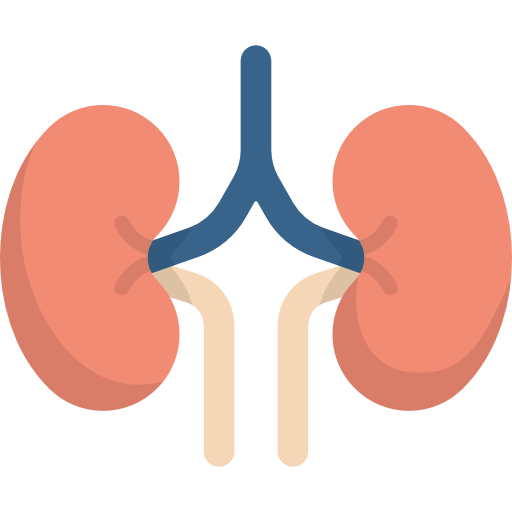Lupus: How is it diagnosed and how to interpret test results?
Published Mar 29, 2021 • By Clémence Arnaud
Lupus is a condition that can be long and complicated to diagnose. It may require several health professionals to make a diagnosis that takes into account all aspects of the disease.
What tests are used to diagnose lupus? How should the results be interpreted?
We tell you everything in our article!

Lupus in a few facts
Lupus is a chronic systemic autoimmune disease, which means that it affects many organs.
It is a rare condition:
- Around 41 people out of 100,000 have lupus.
- Lupus disproportionately affects women: 90% of adults with lupus are women, and most women develop it between adolescence and menopause.
- Peak incidence occurs between the ages of 30 and 39.
How is lupus diagnosed?
The rarity and wide range of symptoms make lupus particularly difficult to diagnose. It is a disease that evolves in the form of flare-ups, and diagnosis is usually made during a flare.
Initial symptoms usually include joint pain and skin problems such as rashes. During a flare-up, a patient may also experience fever and fatigue.
Diagnosis of lupus is made by a multidisciplinary team. The attending physician collaborates with one or more physicians depending on the patient's condition:
- A general medicine physician, who specializes in rare diseases
- A nephrologist (when there is kidney damage)
- A rheumatologist, specializing in joints and bones
- An ophthalmologist
- A dermatologist
The physician first carries out a clinical examination, looking for symptoms that may be suggestive of lupus, and then prescribes additional tests.
Additional blood tests
In the case of lupus, abnormalities will be found in the blood, such as anemia (drop in red blood cell count), a drop in white blood cell count (called leukopenia, < 4000/mm3 observed on at least two occasions) or a drop in platelet count (called thrombocytopenia, < 100,000/mm3 with no drug-related cause).
In this pathology, testing for antibodies can allow a precise diagnosis to be made:
- Anti-nuclear antibodies (ANAs): While these antibodies are not specific to lupus, 98% of all people with systemic lupus have a positive ANA test, which makes it the most sensitive diagnostic test for confirming a lupus diagnosis. These are autoantibodies to the nuclei of the body's cells and the pattern of the ANA test can provide information about the type of autoimmune disease present and appropriate treatment to be prescribed.
- Anti-dsDNA antibodies: Anti-double-stranded DNA antibodies (anti-dsDNA) are a specific type of ANA antibody found in about 30% of systemic lupus cases. Less than 1% of healthy patients have this antibody, so it can be an important player in confirming a lupus diagnosis (though the absence of anti-dsDNA does not exclude diagnosis). The presence of these antibodies often indicates a severe case of lupus and when the disease is active it is often present in high amounts. However, this test cannot be used to monitor lupus activity, because anti-dsDNA antibodies can be present even when the lupus is not active.
- Anti-ENA (extractable nuclear antigen) antibodies: anti-ENA antibodies often used to screen for lupus. However, they are only present in 10 to 20% of cases.
- Antiphospholipid antibodies: these can be looked for in lupus to exclude antiphospholipid syndrome (APS), sometimes known as Hughes syndrome. Around 50% of people with lupus have these antibodies, but they may also occur in people who do not have lupus.
Clinical exams
 Dermatological symptoms:
Dermatological symptoms:
These are the most common symptoms found in lupus patients, occurring in 80% of cases. The best known is the butterfly rash, a butterfly-shaped rash on the face around the eyes, cheekbones and nose. These skin symptoms develop especially when the skin has been in contact with the sun.
Other slowly or chronically evolving skin conditions may appear on other parts of the body: ring-shaped rashes, purplish blemishes, nodules, scaly patches (similar to psoriasis plaques).
At the time of a lupus flare-up or in the three months following it, diffuse hair loss may develop; this diffuse alopecia typically disappears gradually after the start of treatment.
 Joint-related symptoms:
Joint-related symptoms:
Lupus manifests through joint-related symptoms in 80% of cases, which can be an early sign of lupus. Several joints are typically affected: hands, fingers and wrists, but also the feet, knees and ankles.
In lupus, the joints can become warm and swollen, but are usually not deformed. Pain is often felt at night and is often symmetrical. The muscles can also be painful.
It is important to assess the joint damage by X-ray upon diagnosis.
 Vascular symptoms:
Vascular symptoms:
Vascular problems are not specific to lupus but can be associated with it. Raynaud's disease, which corresponds to poor blood supply in the extremities, is often found. Other disorders such as phlebitis and thrombosis may occur.
A Doppler ultrasound of the veins and arteries, a dilated-pupil fundus examination (imaging of the back of the eye) and other exams must be carried out to understand the extent of any vascular damage.
 Kidney-related symptoms:
Kidney-related symptoms:
Kidney damage is not the most prevalent in lupus patients. When it does occur, it progresses slowly or is occasionally present at the onset of the disease. Proteinuria (excess protein in the urine), hematuria (presence of blood in the urine) and blood creatinine are indicators of kidney damage. When protein levels in the urine are > 0.5g/d, it is a sign of kidney damage.
Depending on the type of damage, other examinations may be suggested: kidney and skin biopsies, X-ray or CT scan of the chest, ultrasound or MRI of the heart, MRI of the brain, etc. These examinations make it possible to assess the various types of damage to the patient at the time of diagnosis.
Was this article helpful to you?
Share your thoughts and questions with the community in the comments below!
Take care!
Comments
You will also like

No One Knows What Being Diagnosed with Multiple Sclerosis Is Like, So Maintain A Can-Do Attitude
Aug 17, 2018 • 12 comments

 Facebook
Facebook Twitter
Twitter

